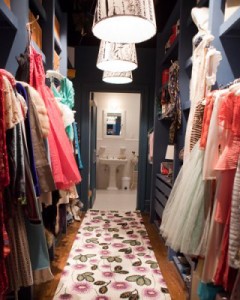
According to Gok Wan, the nation’s favourite stylist, women wear only 30 per cent of their wardrobe. That’s probably because the rest of it is in a crumpled heap at the bottom of the cupboard, the laundry basket, or, if you’ve got moths, the mending pile.
Many of us have one small wardrobe into which we cram everything so that even when we can find the thing we want to wear it comes out in such a state it has to go to the cleaner to be professionally dealt with.
Perhaps it’s time we took care of the storage. After all, if you can’t sell your house you might as well improve it while you wait for the market to pick up and, as anyone who watched the first Sex and The City movie, will know, the plot was not about the acquisition of a husband but the acquisition of a walk-in wardrobe.
Stephen Tombs, of Walk in Wardrobe Store says that five years ago a walk-in wardrobe was the preserve of the affluent, living in huge houses who didn’t know how to use all their space.
“It’s much more accessible now. We go into quite modest homes and convert spare rooms and small spaces and we are really busy all over the country,” he says. “Good storage can really add value to your home and everyone wants that at the moment.”
Paul Humphriss, of Walk In Wardrobe Zone , says we are simply catching up with the Americans and the Europeans who have insisted on good storage for a number of years.
“A minimum space requirement is about 6ft by 6ft to install an good-sized L-shaped walk-in – which will cost around £2,500 – but if you haven’t got that much space in the master bedroom, you can convert a spareroom or boxroom. Everything we supply can be removed so you can take it with you when you move and have it reinstalled,” he says.
This also removes the worry of turning a four bed family home into a three bed with storage.
“People do worry about losing a bedroom, even if it’s one they don’t use that much, but a walk-in is a real selling point and if you can offer the option of removing it when you go, then a buyer can choose between the bedroom and the storage.”
One of the easiest ways to create a walk-in wardrobe is in a large master bedroom where you can install a short partition wall with openings at either end. Put the bed in front and it creates a look as well as hiding all the clothes. This is what I have done in my house.


Many rooms are awkward shapes and that is often ideal for squaring off an area for storage. In a long thin attic room, consider putting shelving along both sides, rather like the Carrie Bradshaw version at the top. If you are thinking of converting the loft, then try having a smaller ensuite and leaving room for a walk-in wardrobe as well. Or, you can do as Humphriss suggests and turn that under-used spareroom that doubles as an un-used study into a walk-in wardrobe.
If you don’t want to spend thousands of pounds, and frankly who could blame you at the moment, there are other more wallet-friendly options. Sally Robinson, of www.organisemyhome.com, sells the American ClosetMaid (CORR) system of wire shelves and baskets that cost from £199 for a basic layout and you can install it yourself.
It sounds obvious but you really must start by working out how much space you actually need. Collect all your clothes, shoes, coats and accessories. Work out how many high rails will you need for trousers and dresses and how many half for tops and skirts. Do you need space for ties and belts? Are you hanging onto a lot of things that you will neve wear again. And, it’s worth noting that Humphriss says often men have more shoes than women.
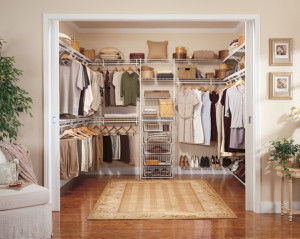
“We have definitely noticed a change in requests from reach-in to walk-in wardrobes,” says Robinson.
“The shelves are quite plain to look at but once they are covered with your stuff it doesn’t really matter,” she says. “You can design your own system to suit you, or buy one of the ready-made ones and it’s easy to install and remove so you can take it with you when your move, or add shelves and rails as you buy more clothes.”
When I was last househunting, I noticed that in several houses where the final bedroom was small, the vendors had, instead of making it into a poky study, simply added it onto the larger room next door and made a dressing room. After all, if you work from home, why should you spend all day in the smallest room in the house (well all right the second smallest). Far better to work in the sitting room, or kitchen, which will be more spacious and use the tiny nursery bedroom for your clothes. Once the smallest child has vacated of course.
Once you have installed the space to your liking, you can start adding mirrors and lighting to create the full effect. Then, when you do put your house on the market, you will instantly seduce any potential buyers with the gloriousness of your storage.
A WORD ON THOSE PESKY MOTHS
There has been an explosion in the moth population in recent years and they are gorging themselves on all that cheap cashmere you thought was such a bargain. Getting rid of them involves a two-pronged attack of treatment and prevention.
Ring the British Pest Control Association (01332 294288) who can put you in touch with a local firm. Their advice is that you should expect to pay around £100 for an application of insecticide to kill the larvae followed by a repeat visit when any eggs, which do not respond to insecticide, have hatched. The house should then be thoroughly cleaned to make sure that no dark corners have been missed.
Once the treatment has been done, you need to think about prevention to avoid reinfestation.
Make sure all woollens and natural fabrics are thoroughly cleaned before long term storage. That will kill the eggs and remove any perspiration odours that attract the moths. You can do this either by dry cleaning or buy leaving the clothes in the freezer for about a week to kill the eggs.
Then you need to invest in garment bags or more plastic bags and put them in another sealed box or drawers with some lavender or cedar balls. Opinion is divided as to whether the green approach is more effective than the chemical moth ball, but it will smell nicer.
Another treatment that I have found quite effective (although mildly gruesome) are pheromone moth traps. Basically a sheet of sticky paper that attracts the male moth and traps it, thus preventing it from breeding with the female. This, in turn, prevents the eggs ever being laid – it is the larval stage that does the damage to your clothes. You will need to scatter a few around the place and they last for about six weeks but if you remember to keep replacing them, certainly for a few months while the whole cycle works itself through, it’s a good solution. Try Stop Moths UK and expect to pay around £7 a trap. Expensive? Yes? Cheaper than cashmere? Exactly.
Remember, they probably came in through the window or in that vintage rug you bought. Close the curtains when the lights are on, make sure you clean regularly in dark corners,vacuum under furniture and keep your clothes scrupulously clean.



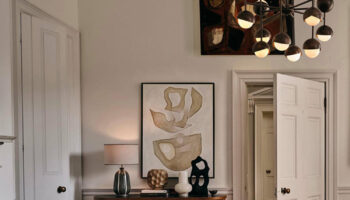
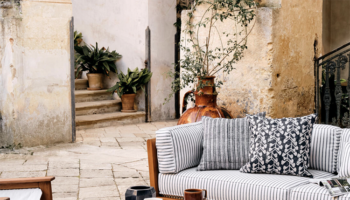
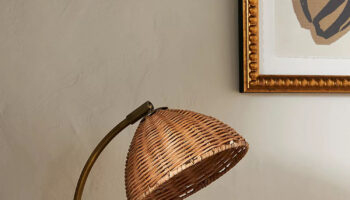
I bought moth traps cheaper at around £8.00 for a packet of 10 from a great company http://www.pestcontroldirect.co.uk
A walk-in wardrobe is every girl or woman’s dream come true! I always had this idea in mind all the time while I was home renovating! But It was not feasible for us, with a a 100 sq feet of property. We still got custom built wall units from Space Age closets of Toronto ( https://www.gtaclosets.com/living-room-bedroom/wall-beds/ ) . We absolutely love our piece, and even caught our guests adoring them.
Yeah me2. I’m actually working on my own!
Hmm, looking at my small spare room with new eyes now – brilliant thanks!